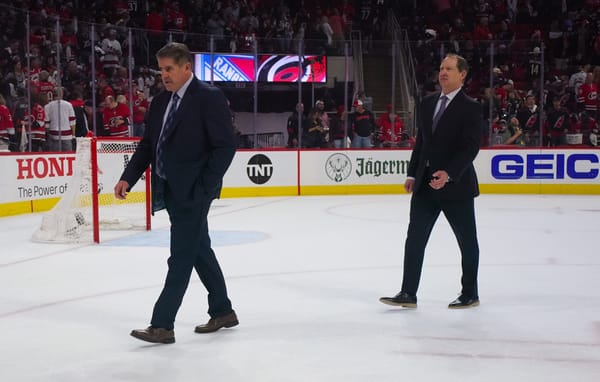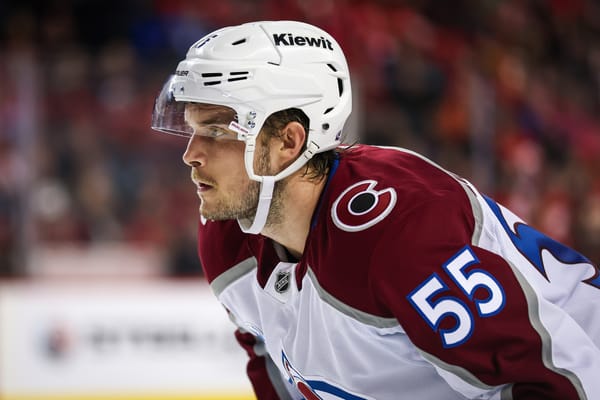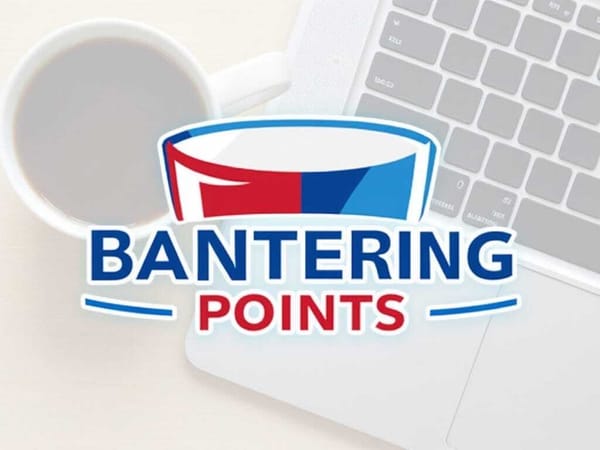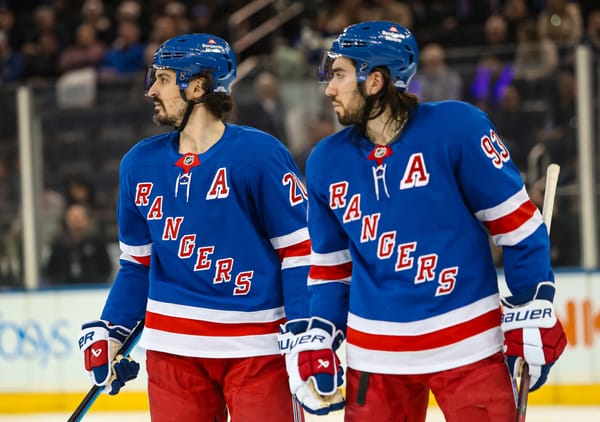As of Now, Are the Rangers Contenders?
Every offseason, hockey media speculates about how teams will perform in the upcoming season. Most years, the New York Rangers are labeled as a team on the decline that could fall out of Stanley Cup contention.
The Rangers have been mislabeled in the past, for example when their blue line was classified as one of the strongest in the league when it was an ineffective mess. Dan Girardi was viewed as this incredible shot-blocking, defensive defenseman – a title that he did earn earlier in his career, but should have been quickly stripped of after the 2013-14 season when his decline became so glaringly obvious. Other Rangers transactions were commended, even short-sighted moves that impeded the team’s long-term promise.
In recent seasons, particularly under the Jeff Gorton era, the Rangers have taken a more calculating approach to the offseason. Last year, rather than making a splash involving a past-their-prime, marquee name, he made low-risk moves that actually improved the team in necessary areas. Under the Tortorella era, as strong as their defense was, the Rangers scoring was one of their greatest flaws. Then under Vigneault, the defense began to disintegrate (some of which was due to personnel changes, like losing Anton Stralman and acquiring Dan Boyle; others due to declining players like Girardi and Marc Staal), while their scoring increased. Even after a change in strategy to make them a more offensively minded team, they needed the personnel to reflect that. Gorton recognized their need for scoring depth and acted accordingly, with low-risk signings like Brandon Pirri and Michael Grabner. Jimmy Vesey was also signed as a free agent when his draft rights expired.
As disappointing as the Rangers five-game elimination to the Pittsburgh Penguins was in 2016, it was necessary to assess where this team truly needed to improve. The defense should have been the top priority, but it was not adequately remedied. Some of the offensive needs were finally met though, which made the Rangers look like a more complete iteration moving into the 2016-17 season – yes, even with Henrik Lundqvist’s window closing, as the media tells us incessantly.
By no means was this Rangers’ team perfect nor complete. In fact they accumulated more points than they deserved. But then again, the bar is pretty low when they’re labeled as a “bubble team” that could miss the playoffs.
This offseason, Gorton certainly made a splash – but not in the way that the Rangers usually do. Rather, he cited a new philosophy: “rebuilding on the fly.” As long as Lundqvist is in net, the idea is to be as competitive as possible, because even at his “old” age of 35, he gives the Rangers best chance of making it to the Stanley Cup again. But, in order to be competitive, an overhaul was needed in one particular area: the blue line.
And Gorton finally did just that. Girardi was bought out of his cap consuming contract and replaced by 28-year-old Kevin Shattenkirk on a contract that is not just lucrative for him, but actually for the team as well (four years, $6.65 million contract).
Brendan Smith, the Rangers’ 2017 deadline acquisition was actually retained when his contract expired – unlike their past flashy deadline deals that mortgaged the future on short-term assistance. And to avoid past mistakes, like long-term contracts that ran far past a defenseman’s prime (i.e. Staal and Girardi’s six year deals), Smith was also only signed for four years ($4.35 million cap hit). Even more encouraging, Gorton noted how Brady Skjei was a top defenseman for team, giving the impression that Staal was receiving a much-needed demotion to the third pair.
All in all, the Rangers upgraded their top four from McDonagh, Girardi, Staal, and Nick Holden to McDonagh, Shattenkirk, Skjei, and Smith. As for the bottom two, the Rangers have Staal, Holden, newly-acquired Anthony DeAngelo (from the Stepan/Raanta trade), and a number of defenders looking to make their NHL debut (Alexei Bereglazov, Neal Pionk,and Vince Pedrie). Also, there’s Ryan Graves who spent the last season in the Rangers’ AHL affiliate, the Hartford Wolfpack.
Skjei flourished in his rookie season. Next season, he’ll likely be paired with Smith (and we saw how stellar they were together in the playoffs) or Shattenkirk. Either are clear upgrades to his primary 2016-17 season partner, Kevin Klein, which should facilitate his development even further.
While there are still questions surrounding DeAngelo, there are so many other options to experiment if he does not fit with the Rangers on the third-pair. Overall, with or without DeAngelo, the defense has transformed from last season, which is why one position in a sheltered third-pair role is not particularly worrying.
The only unresolved issue with the defense is the coaching, because they’ll determine the usage of these defensemen. Unfortunately, they could easily fall back on some of the dismal combinations from last season, like Holden-Staal, and limit Skjei, Smith, or Shattenkirk’s usage. Then again, Gorton believes in his upgraded top four and may not give Vigneault as much leeway in that area.
The renovations on the Rangers blue line are a drastic improvement, and certainly increase their chances at winning – especially since the defense was the most detrimental aspect of their game and blatantly contributed to their postseason collapse. Or, do we not remember this?
Or this?
Or this?
Behind the defense, is Lundqvist in net. Let’s get this out of the way now: Lundqvist has aged, his play has declined, and we should be disappointed with last season. Out of your system now? Okay good, let’s look at why his play wasn’t up to par last season. Most of it has to do with those players who are supposed to make his job a little easier – the defense. How often was Lundqvist left in a vulnerable position? How often did he overcompensate for the defense’s shortcomings? And how did his coach support him – keep in mind that the mental aspect of goaltending is imperative – especially when his play dipped in the month of December (which it has done throughout his career). There were doubts if Lundqvist should have even started in the playoffs, yet he was the primary reason for their first-round success against the Montreal Canadiens.
Lundqvist did not reach expectations, but that was not the reason that Antti Raanta played as often as he did. While he did relieve Lundqvist of having to play as much, which was the intention, he also filled in for him while he was injured – boosting the number of games he started to 30. Because Raanta played so well, his value increased and he was subsequently traded to the Arizona Coyotes.
And the same happened with Cam Talbot when he was the Rangers’ backup. He was stellar in Lundqvist’s absence, but he truly did not have a chance to take over as the team’s starter. Instead, they noticed how high his value increased after his stint as the lead goaltender in the New York, and they traded him to the Edmonton Oilers.
Next season, Ondrej Pavelec will take over backup duties. While he may be a concerning choice to some, clearly the Rangers and goaltending coach Benoit Allaire saw potential in him – which is promising enough. Allaire has trained goaltenders so well (Talbot and Raanta are prime examples) that their backup situation should never be too much of a cause for concern.
And behind Lundqvist and Pavelec is a deep pool of developing goaltenders that includes Alexander Georgiev, Brandon Halverson, Tyler Wall, Adam Huska, and Igor Shestyorkin – ensuring future stability in net.
The biggest gaps in this lineup, at this point in the offseason, are on offense. Losing Derek Stepan will not go unnoticed, as he was their first-line center that played in all situations. Twenty-four-year-old Mika Zibanejad will assume that position next season. While it may be an expanded role for him, he’s a balanced center that has room to grow into the position.
Behind Zibanejad, there’s Kevin Hayes as a middle-six center and free agent acquisition David Desharnais to replace Oscar Lindberg who was lost in the expansion draft. JT Miller may be shifted to center if they cannot find a replacement for the start of the season and if it does not work out, another center could be acquired mid-season.
Pavel Buchnevich should receive a more consistent role in the Rangers’ top six and if he does actually receive that, he is a key player to watch. Rookie Jimmy Vesey should grow next season as well.
As it stands, only 11 forwards are signed for next season. Once Zibanejad re-signs, which will likely be a long-term deal similar to the contract Derick Brassard signed with the Rangers, there is still work to be done on offense – which is why a conclusive reaction can’t be generated quite yet. Luckily, it’s only July 21, and there’s still time for those improvements. Maybe Gorton does move Holden for a middle-six forward, or signs a center whose draft rights expire in August. Until then, the most glaring holes in this team are down the middle of the offense.
Revamping a roster and “rebuilding on the fly” comes with inherent risks and uncertainty – risks and uncertainty that all teams are facing this offseason, whether or not they made drastic changes. As much as there are the questions for those that made changes, the teams moving into next season with a stagnant roster are at risk for shortcomings as well. Until the season begins and we see this roster in action, those questions will remain.
So until this team actually plays, it’s fair to say that it is unknown how this group will perform together. And with Alain Vigneault behind the bench, who has made inexplicable coaching decisions in the past, especially in the 2017 playoffs with the Rangers, there are definitely questions about how certain players will be utilized. But Gorton’s acknowledgement and active remedying of the team’s flaws should inspire confidence, as he made calculating decisions to improve this team with their future in mind – and that is a remarkable change in strategy for the Blueshirts.
Based solely on what has been done so far this offseason, we should be encouraged for next season. Improvements were made in areas that craved a transformation, while gaps were created in other areas. Overall, on paper, it’s hard to come to the conclusion that they’ve regressed.
Gorton went a different route and did not target aging stars and instead focused on those that will be effective now and in the near future. He’s relying on some of his younger players to be difference-makers as well and that’s a fair expectation on any team.
If the Rangers were able to accumulate 102 points last season with such a lackluster defense and power play, then the belief should be that they can make it even further next season – led by their aging star, Lundqvist in net.




